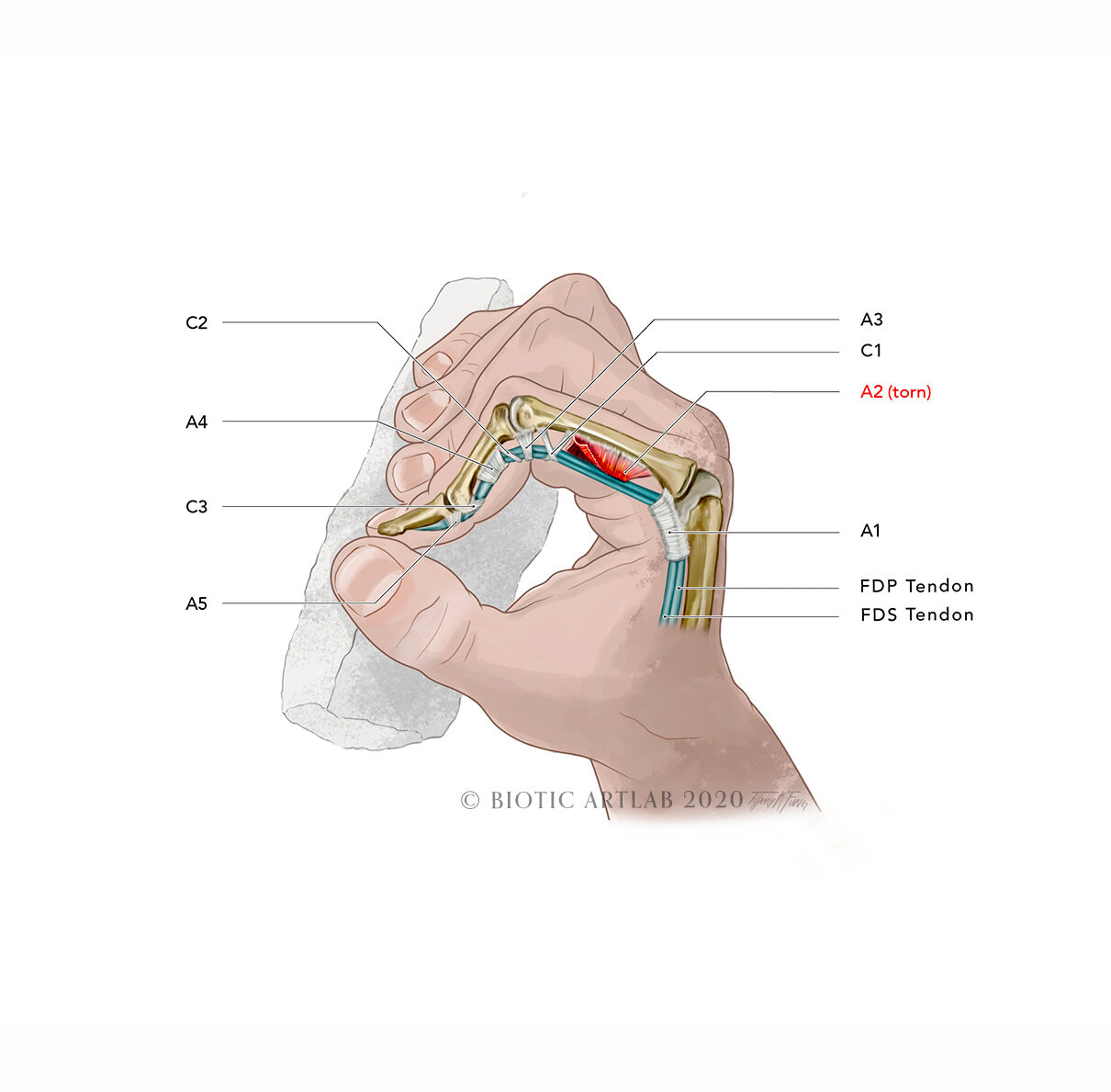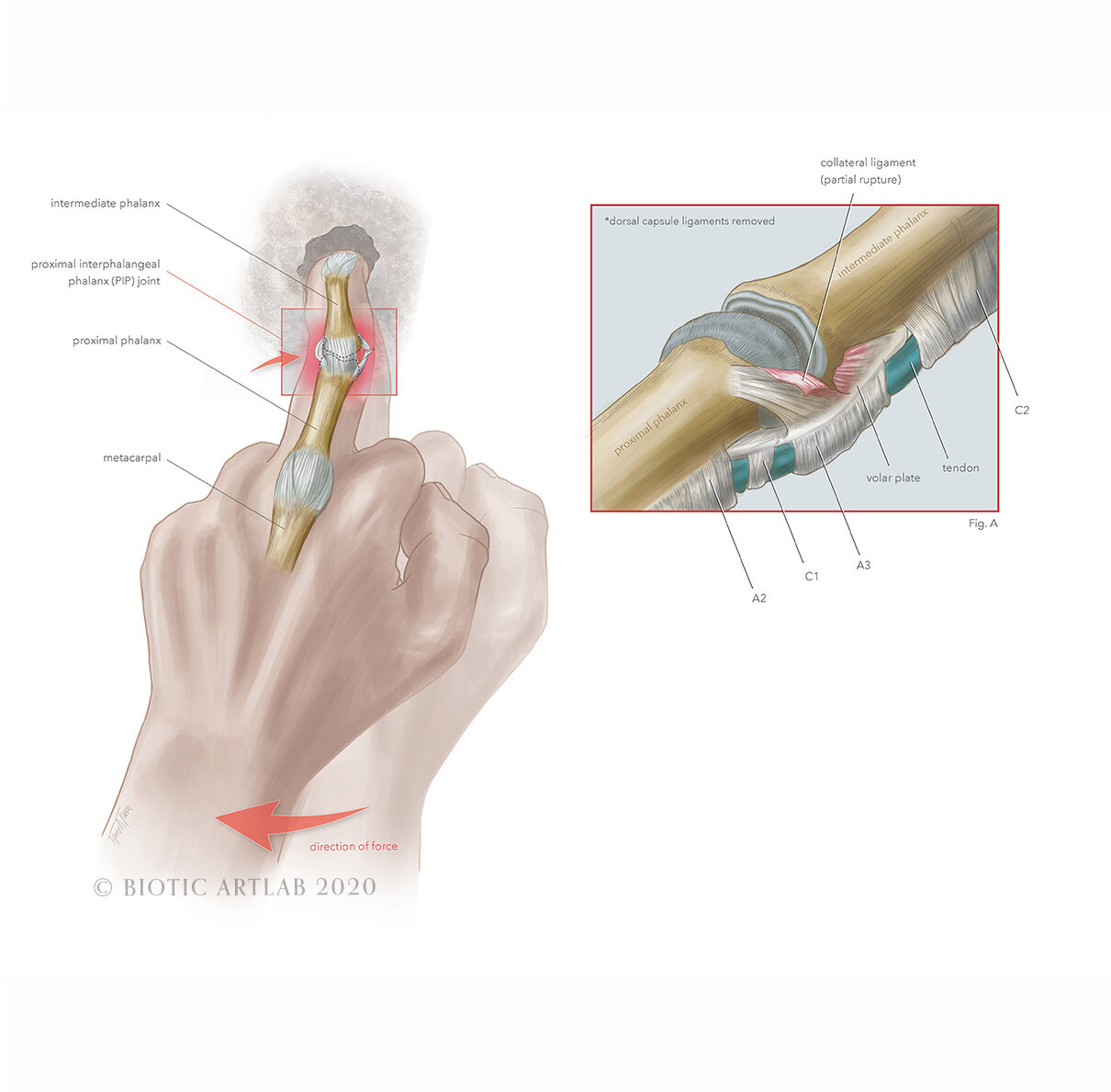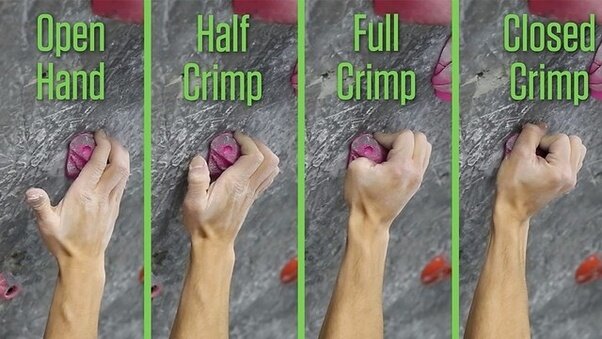Medical Illustration in Climbing Sports Medicine
Different variations of hand positions on a crimp. Photo credit: Epic TV
Hi guys, Tiffany here to talk a bit about how medical illustration can work to bring exposure to sports medicine and under-represented sports. In particular, I will be talking how medical illustration pertains to rock climbing, however this can be extrapolated to other sports.
What is sports medicine?
Sports medicine is a branch of medicine that encompasses the treatment and prevention of sports-related injuries. Most of these injuries arise from some form of trauma or muscle strain. Whether it’s a nagging pinching in your shoulders or something as severe as a fractured bone, this field helps promote exercise and health while better understanding performance in sports.
What are obstacles in learning about sports medicine related to climbing?
Not every sport has the same amount of exposure in the medical world. Unlike other major sports, climbing has not had the same amount of time in the spotlight, which generally translates to less research and less funding.
less climbing-related injury research (although this is quickly changing)
hand anatomy illustrations are not targeted for climbing-related injuries
MRIs/CT scans are complex and hard to understand for the average athlete/patient
physical hand models do not capture the intricacies of hand/finger tendons and muscles
How can medical illustration facilitate sports medicine education for patients/athletes?
We were able to work with the University of Rostock to create a series of medical illustrations that target climbing hand and finger injuries. In specific, we targeted the most common finger injuries:
pulley ruptures/pulley strain: a partial or complete tear of the pulleys that keep the finger tendons close to the bone. One of the most frequency injuries that climbers experience, a pulley injury occurs from when a climber exerts a large force on the finger tendon. This in turn loads the pulleys (most often in crimping), and can result in a rupture. It is one of the most common and frequent injuries experienced by climbers. An open hand or half crimp have a gentler impact on your joints. Full and closed crimp have the greatest impact.
tenosynovitis: inflammation of the fluid-filled sheath (called the synovium) that surrounds a tendon, typically leading to joint pain, swelling, and stiffness.
PIP joint capsulitis: Inflammation of the capsule of proximal interphalangeal phalanx (PIP) joint
Take a look at this example of a standard illustration of hand anatomy that you would find in a textbook (see below).
Image credit: Anatomynote.com
As you can see this image is very helpful for general hand anatomy. However for a sports specialist, it functions on too general of a level. In the illustrations below, the hands are situated in the hand position where the injuries are most likely to occur. This is not to say that you should NOT use those hand positions when climbing, as they are unavoidable.
Rather, it is to educate on:
How to be conscious about your finger health. Are those particular finger combinations strong for YOU and if not, be conscious that these types of positions can exacerbate your weakness!
Show which part of your finger anatomy is under pressure




What are other applications for medical illustration and sports medicine?
Medical illustration doesn't stop at anatomical illustrations. It can also be used for a variety of applications:3D modeling to visualize climbing prosthetics for athletes (Klippa)
Motion graphics to depict force on climber’s body (see Redbull video below)
Klippa prosthetic leg designed by Kai Xiang Lin is inspired by mountain goats and their ability to climb exceptionally steep terrain. Photo credit: Kai Xiang Lin
The use of motion graphics helps accentuate the different forces applied on a climber’s body. Video: Redbull



